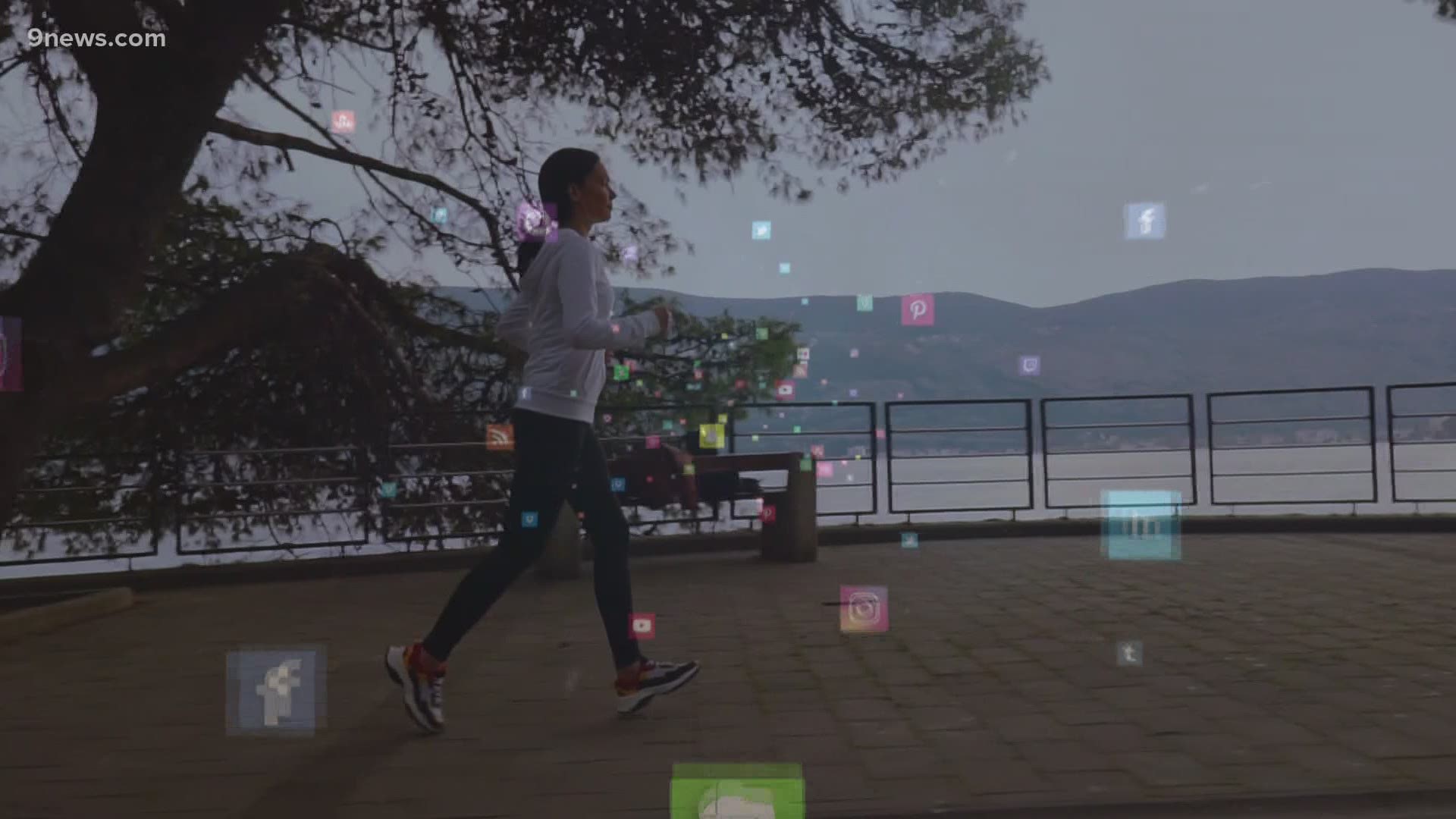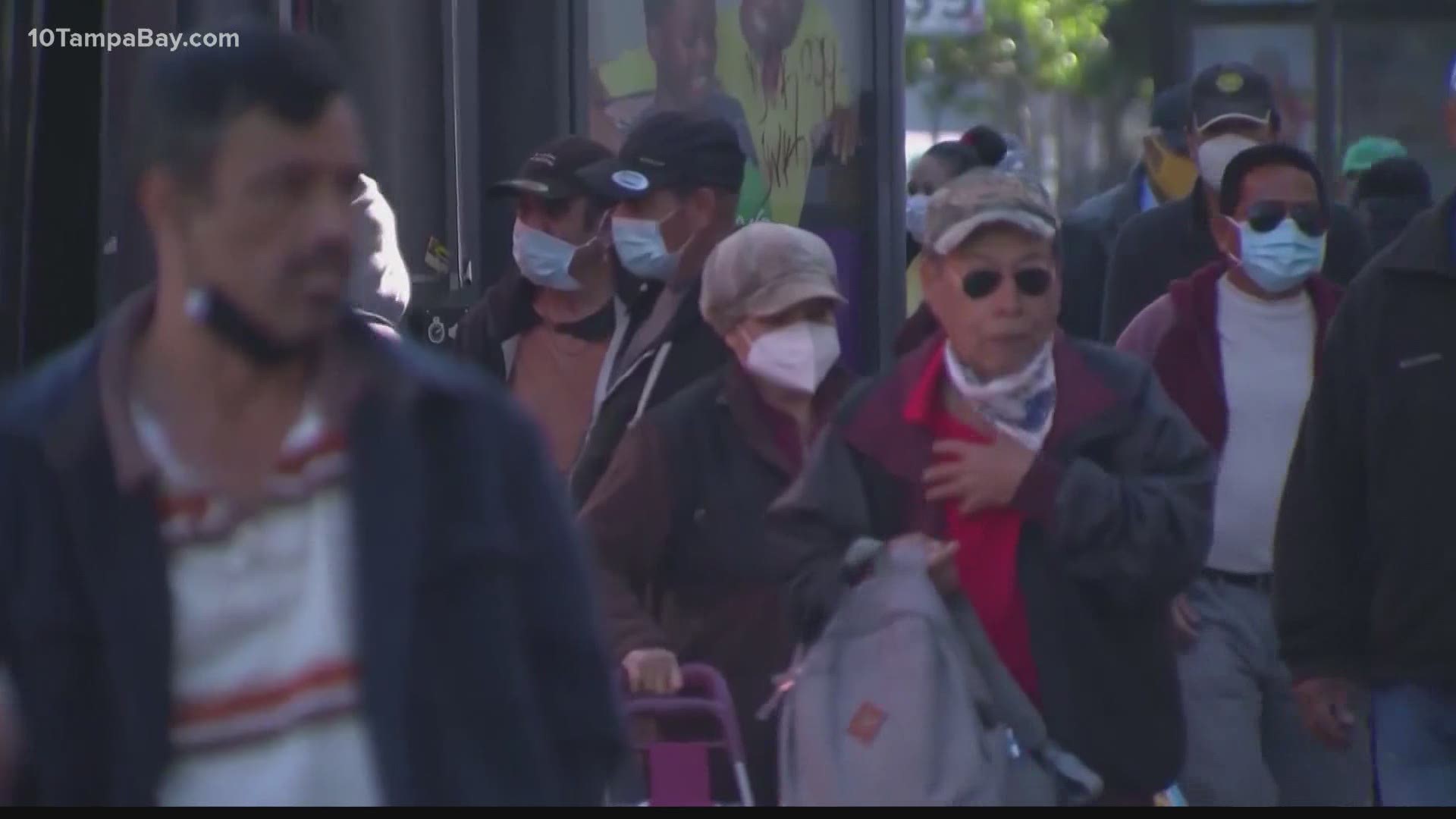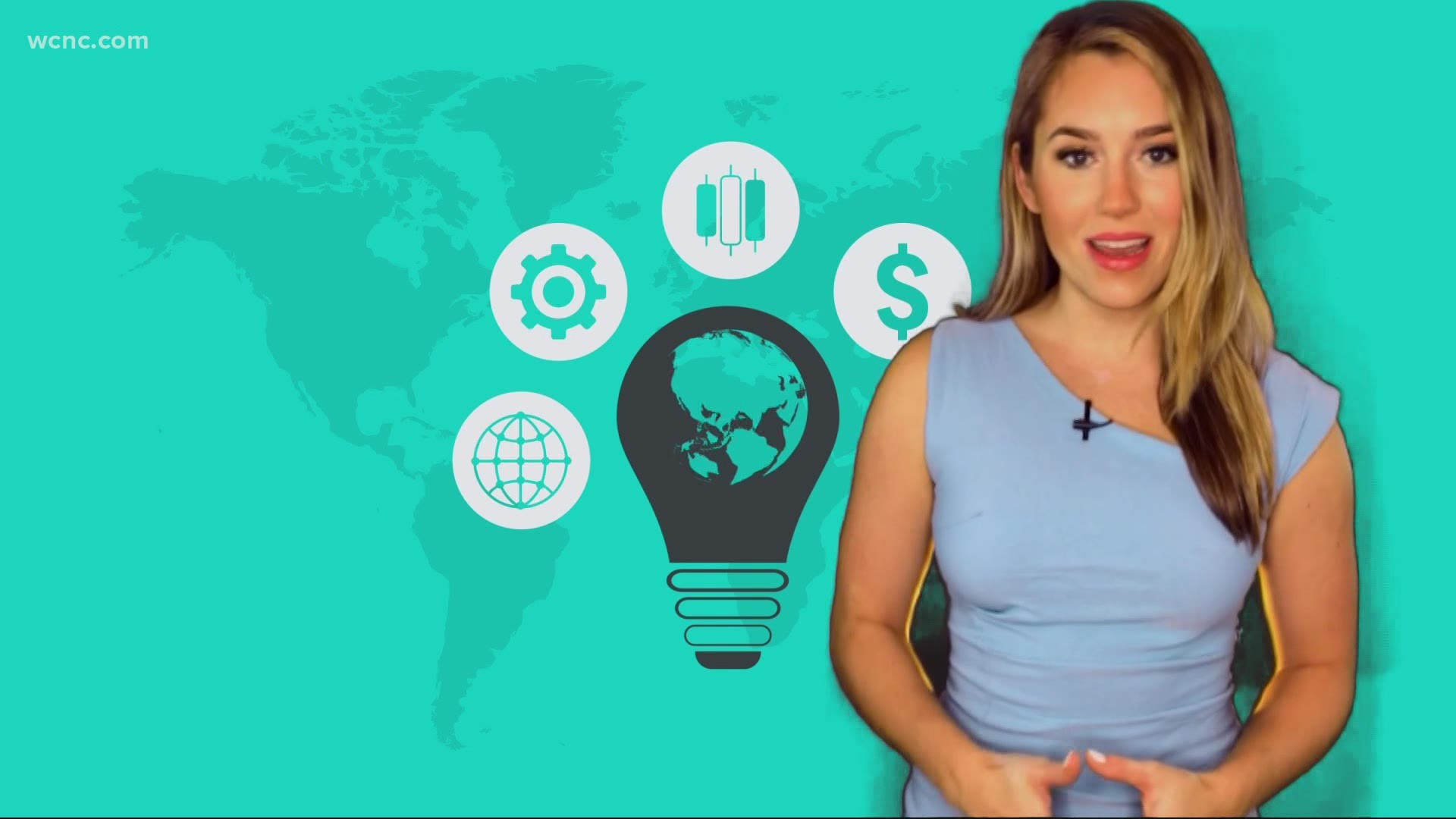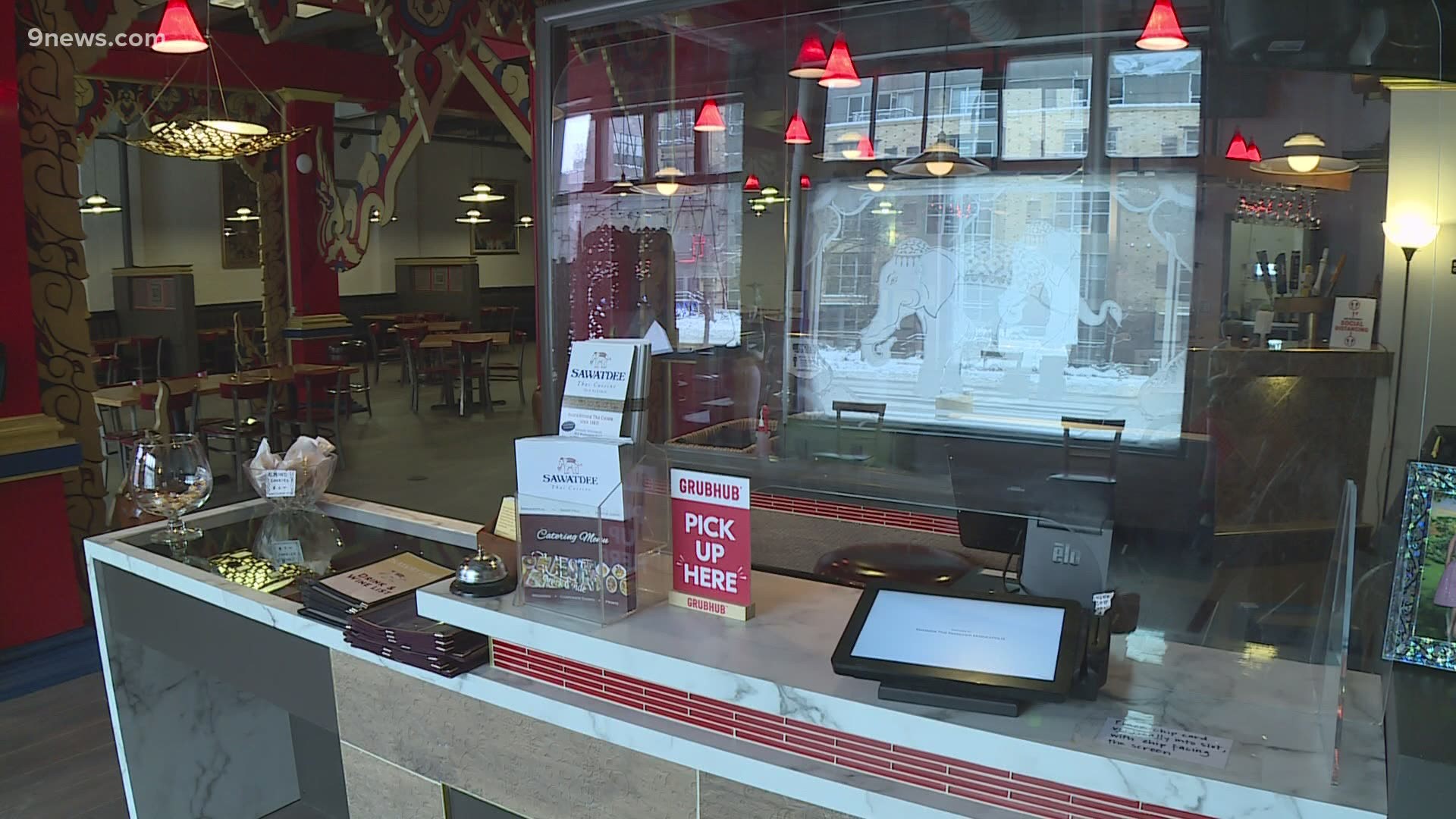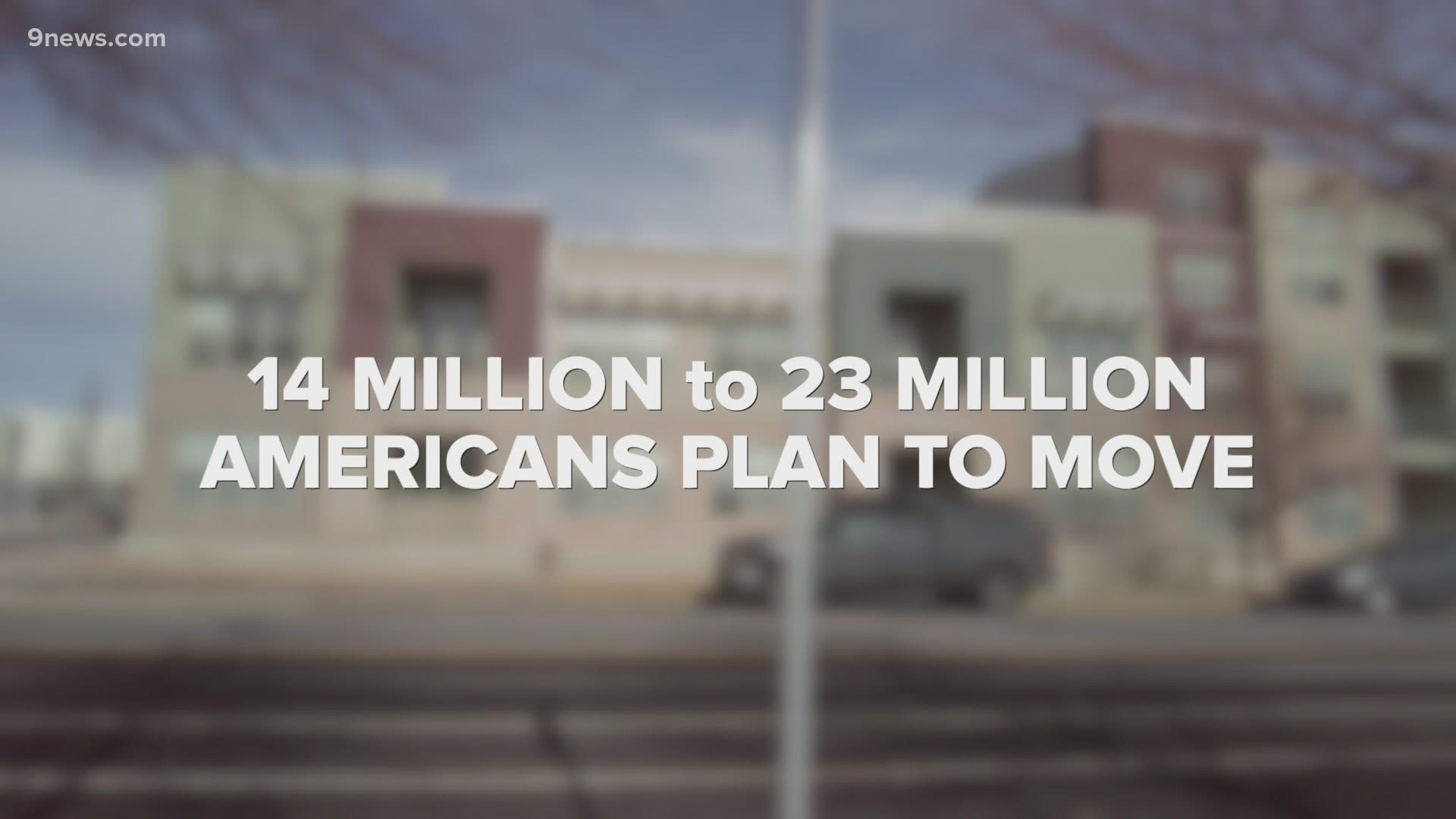What will life be like once the COVID-19 pandemic ends?
Here's a look at how life will be different — and what will be the same — after the COVID-19 pandemic ends.

In a matter of just one year, COVID-19 has changed virtually every aspect of our lives.
But, with the rollout of vaccines among more and more people, experts are now looking ahead to what life will be like after the pandemic ends.
Will working from home still be the norm? What about face masks? And then there are the lingering impacts of the virus itself, from continuing symptoms among the youngest and healthiest patients to the isolation felt by society's most vulnerable.
A team of reporters from across the country answered these questions and more for the TEGNA special project "Life after COVID."
Will we keep wearing masks after the pandemic? There is a medical reason to keep your mask, but political experts say it's unlikely
By Thuy Lan Nyugen
WTSP (Tampa)
Masks are part of our everyday routine right now. Schools, planes and stores all require them. We know we probably won't have permanent mask mandates, but can mask-wearing become a habit for some people post-pandemic?
Doctors say it comes down to social responsibility. Wearing a mask is a way to protect those around you and it's a good idea, even if it's just a sniffle or the common cold.
"If I have a cold and I cough and sneeze, I can give it to someone else. Would I go into a place knowing I have that? It's like drunk driving," said Dr. Jay Wolfson, a professor of public health at the University of South Florida. He says there is a medical benefit to wearing masks by choice when you're in crowded spaces or on a plane in the future. "Especially, post-pandemic if we still don't know what's spreading," he added.
"There are so many reasons people have worn masks and will continue to wear masks. They have a disease that puts them at greater risk for catching something or they're going through cancer treatment," Wolfson said. "It's also just respectful to wear one, it says, 'I may or may not have something and I don't want to give it to someone else,' and it's responsible.'"
While some people may choose to wear a mask from now on, it's not likely we'll see it here in the U.S Compared to other countries, Americans have been slow to accept mask mandates.
"There's a cultural norm in China or in Hong Kong and other places to wear a mask when you yourself are sick, but in the U.S. the culture of individualism or individual choice is very strong," said Shana Gadarian, a political science professor at Syracuse University. "To make people believe they are the experts in their own health decisions and they should do what helps them, rather than the community is a big hurdle to overcome."
How to handle the psychological toll From isolation to anxiety, COVID-19 has taken a toll on our mental health
By Jen Wahl
KPNX (Phoenix)
In the middle of a global pandemic, another crisis has also been brewing when it comes to mental health and social well being. And now, many are questioning how to return to whatever is normal on the other side after months of isolation.
Psychology experts who have been studying the effects of isolation on people during the pandemic are also helping answer the questions that have been swirling. Many have been asking how to look ahead to "life after COVID-19."
Kelsey Andrews is one of those people. She is wrestling with being a first-time mom during the coronavirus outbreak and finding ways to allow her daughter to socialize safely.
"Last year, at the very beginning was so incredibly difficult, because I had already been isolated for two-and-a-half to three months and then all of a sudden, I'm ready to go out and we have to come in," Andrews said.
Andrews was about to go back to work from maternity leave when the outbreak hit. She made the tough decision to stay home longer with her young daughter as COVID-19 picked up steam around the world.
"I didn't handle it my best at the beginning," Andrews said. "I cried a lot."
Fast forward about a year later, like many of us, Andrews, her husband and daughter Avery remain very isolated. They're concerned about the long-term impacts of isolation on their developing child.
INTERACTIVE: Healthy ways to cope with stress during COVID
"She's never even met another baby. Where's her social development going to go?" Andrews said.
Kristen Northup and Ryan House are on the front lines of the mental health impacts of COVID-19 as psychology doctoral students.
They recommend parents not stress about the lack of social interaction their children may be experiencing.
"As long as they have that secure base to bounce off from, they're going to be just fine," House said.
Northup and House added that social interaction is important, and parents can be creative in how their children engage safely with others during a pandemic. That can look like social distanced playdates, online groups and more.
This team advises four key principles to set us up for the upcoming transition back to our "new normal." They've developed these while studying how we can all lessen the stress of pandemic isolation in our daily lives.
Their four recommendations for beating the stress and isolation are: Setting a good routine, scheduling safe social interaction, taking care of yourself, and when you can, switching things up.
"Doing something a little different really creates a little bit of space in your emotions, in your psyche, to allow for a whole new possibilities going forward," House said.
"Understanding where you were before all of this happened, and then kind of identifying where it is you want to be," Northup said.
As we've seen, the impacts of isolation moving forward aren't just a concern for younger generations. Many of our elderly neighbors are battling extreme loneliness.
"With the isolation and with the lockdown in place, that emotional toll that it took on him and that level of depression he began to feel was elevated essentially," Lauren Strait said.
Strait quickly found herself unexpectedly caring for her elderly grandfather during the pandemic. Her role changed fast, from granddaughter to protector.
"The emotional and the physical and mental (toll), all of those things were kind of collapsing for him at once and it became the perfect storm," Strait said.
Our psychology experts recommend those original key principles to help in these cases, but say caregivers are important game changers. They can help by scheduling those social interactions for them safely now and then after the pandemic.
"Typically when we're part of a community, then we can identify a sense of purpose," House said. "We're getting some reinforcement, some engagement. We can see ourselves as part of a larger good. When we're isolated, we don't get any of those rewards."
As these mental and emotional struggles weigh heavy on millions, the psychology team has one more piece of advice.
"People who are able to put things in perspective and remember the past and see the past, are in a much better spot to move off the pandemic and move back into normal life," House said.
Keep in mind, COVID-19 is still fairly new. Researchers have been working around the clock studying the long term impacts of COVID-19 on our mental health.
So for now, it's the simple things -- self care, structure and routine -- that can help guide all of us through the pandemic and prepare us for whatever "new normal" lies ahead.
The long-term impacts of contracting COVID-19 For COVID long haulers, symptoms can persist for months
By Gabe Cohen, Alanna Delfino
WUSA (Washington D.C.)
Nearly a year after contracting COVID-19, Michaelene Carlton is still suffering.
“My everyday life has completely changed,” Carlton said.
When she contracted the virus last March, her symptoms were mild. A month later, her health suddenly declined.
The 47-year-old is still out of work on disability, with daily headaches and extreme fatigue. Her heart races when she stands up. Once an avid runner, she now struggles to get off the couch. She can’t do much with her family, and only leaves home for appointments with her doctors.
“Being able to do everyday activities is really difficult,” Carlton said, fighting back tears. “I'm a mom. I'm supposed to take care of my children. I'm supposed to protect them. I'm supposed to make their lives better. And I feel like I can't do that.”
Doctors are seeing a stunning number of COVID patients develop new symptoms weeks or months after contracting the virus, even those with only mild symptoms during the initial infection.
Several doctors estimate at least 10% of all COVID patients are battling Post-Acute COVID Syndrome (PACS).
“A projected number of individuals with Post-Acute COVID Syndrome may be as high as two million,” Dr. David Putrino said. “And even higher if the number of infections continues to climb."
Dr. Putrino runs a COVID rehab program at Mount Sinai in New York.
“It is a really debilitating syndrome that has a number of persistent symptoms,” Dr. Putrino said.
Those symptoms can include extreme fatigue, exercise intolerance, racing heart rate, shortness of breath, brain fog, difficulty concentrating and more.
At-home fitness and home improvement may we here to stay The pandemic brought big changes as people spent more time than ever at home
By Rachel Lundberg
WCNC (Charlotte)
An op-ed for CNBC showed fitness and health saw a 2 million percent growth rate in consumer interest during the pandemic, which is why this area could not shift back to the way it was before.
While these unexpected shifts were taking place, the next generation of entrepreneurs saw opportunities to meet the new demands.
Countless fitness apps were downloaded during the pandemic. At-home fitness was the only way to connect and stay in shape when working out at a traditional gym was closed.
Bodies By Sav is one of those emerging at-home fitness solutions birthed at the beginning of the pandemic here in the U.S. Savannah Butler is the brains and energy behind the movement.
“Once COVID hit, just like everyone, we were forced with so much downtime, and it really just made me go headfirst into creating Bodies By Sav,” Butler said.
The idea started small and took a lot of consistent work to see the growth it has! It all began with a daily Instagram live workout and then workouts in the park.
During the week, "a solid 10 people" would join, according to Butler.
But week after week, Bodies By Sav experienced exponential growth in the pandemic-era.
Now, Bodies By Sav is offering monthly programs that include at-home, live workouts where you still feel the connection of a workout class but the convenience of it being in your home.
“As a whole, studio fitness has been changed,” Butler said. “It’s changed for the future. People are going to approach it differently, which isn’t a bad thing. I think it’s so important for people to realize that working out from home is still so effective. I genuinely get so excited seeing and feeling their energy, and that is still so effective through a computer. I think that’s really reassured people that they don’t need to drive hours in traffic, rush from point A to point B. If they are home, they can still feel good in their own body, workout really hard and keep that motivation that you get walking into a studio. Everything you thought you couldn’t have at your home, you now have access to it.”
This isn’t to say going to a gym is out, but it is to say, new methods to get fitness done are in, and they are likely here to stay!
Another category spiking in the pandemic era is home improvement. From gardening to revamping spaces we’ve been staring at for months, CNBC tracked a 140% increase in consumer interest.
Remember when toilet paper was hard to find? That also contributed to the home improvement spike. Since it wasn’t safe to let outsiders in due to COVID-19, online searches for how to snake a toilet rose, and businesses like Home Depot reaped the benefits.
Will restaurants and retail bounce back? What will happen to two of the industries hardest hit by COVID-19?
By Jennifer Austin
KARE (Minneapolis)
The plexiglass barriers at the Sawatdee restaurant in downtown Minneapolis have become something of a pandemic staple there and at restaurants across the country, as businesses worked to make indoor dining as safe as possible.
Cyndy Harrison, who owns and oversees three Sawatdee locations in the Twin Cities, thinks diners will see plexiglass and enhanced sanitizing processes for some time.
"That's something that I'm expecting will just continue, and hopefully social distancing won't be as significant, but you never know," she said.
The bigger question for Harrison is whether diners will come back to dine in person, at all. She says she's fortunate that sales at her restaurants (in Minneapolis, St. Paul, and Maple Grove) weren't seriously impacted by the pandemic. However, all locations saw a dramatic swing in people choosing takeout or delivery, even as restaurants were allowed to reopen at partial capacity for indoor dining.
In Maple Grove, Harrison estimates takeout/delivery pre-pandemic made up about 10% of sales. Now, it's a 50-50 split between takeout and dining in.
The shift was more significant at the locations in downtown Minneapolis and St. Paul. Harrison said takeout/delivery stood at around 35% of sales before the pandemic. Now, she estimates it's closer to 90%.
"We anticipate that that is going to continue. Of course, we want to have our full dining room open, but we also want to make sure everyone feels safe and comfortable coming in," she said.
Retail is a different story. No surprise customers have turned to online sales during the pandemic. But for Minneapolis retailer, MartinPatrick3, that wasn't an option. The store relies heavily on in-person customer service. So their sales representatives turned to Instagram, email, and text message to give tailored advice to clients.

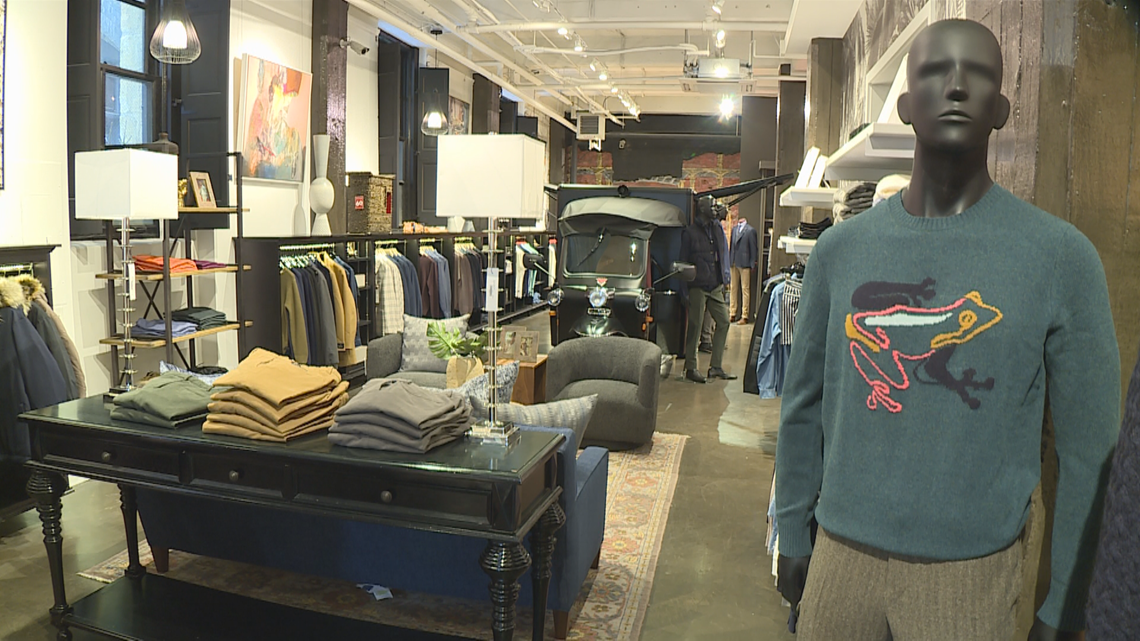
"One of our sales associates had his best month he has every had in retail in December, and about 40% of his business he did through text message and emails," said Carrie Fryman, Director of Marketing & Buying at MartinPatrick3.
The store also shifted its offerings. With suit sales down, they added women's clothing and more casual options. Fryman says those choices have helped them stay afloat during the pandemic.
She says getting customers back in the store once it's safe might take a little more work.
"There are going to be customers that are not going to come in and shop until everyone is vaccinated," she said. "We have to give a reason for people to come into the store. So we talked about having small shopping parties for people."
Then, there's Urban Rooster Shop.
Launched November 2020 by two Twin Cities retail experts, the website is a one-stop online shop for small Twin Cities retail businesses, helping funnel traffic to the local businesses by putting them all in one place.

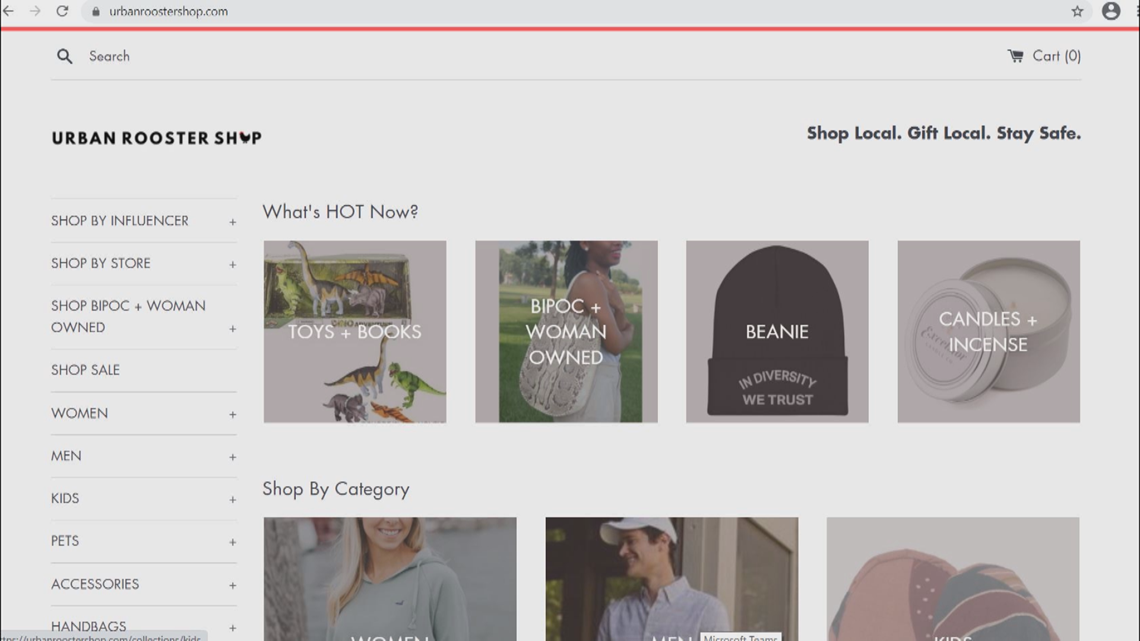
"If we're really going to support local businesses, we have to make it as easy to support them as it is to support Amazon, and Target, and Walmart," said co-founder, Anne Mezzenga.
Mezzenga and co-founder, Chris Walton, think some return to shopping at brick-and-mortar stores will happen after the pandemic. But Urban Rooster Shop is here to stay.
"People have changed their habits and they have become more digital in how they shop," Walton said.
Is working from home here to stay? Now that we can work from anywhere, people are leaving urban areas
By Liz Kotalik
KUSA (Denver)
Courtney Gross works for a company that’s based in Chicago, but her home office is about a 1,000 miles away in a suburb of Denver.
“I started working from home full-time in March,” she said. “I just went to my boss and said ‘this is what I think is right for me to do right now.’”
After the COVID-19 pandemic made working from home a necessity, numerous other employees have started working for companies based far away from their home offices. Ryan Frazier, an entrepreneur and business expert, said Colorado and North Carolina are now seeing a particular interest from folks across the country.
Frazier said he believes the trend of remote work will outlast the pandemic.
“More employees and their families are looking at relocating,” Frazier said.
And by more, he means millions. Research from Upwork, an employment firm, found anywhere from 14 to 23 million Americans plan to move because they work from home now.
Part of this is spurred by an effort to find cheaper housing, Frazier said.
“We were seeing areas of the country with double and triple the values over the last 10 years,” said Lane Lyon, a managing broker and realtor for Coldwell Banker. “I’m talking about places like Boise, Idaho, Utah, Nevada, Colorado and as the pandemic started to set in, we saw a migration from some larger urban areas.”
In a 2020 study, United Van Lines found most of its customers moved to Idaho – 70% to be exact.
South Carolina, Oregon, South Carolina and Arizona rounded the top five.
New Jersey was the top state people wanted to get out of, according to that study, followed by New York, Illinois, Connecticut and California.
The company’s data found that from March to October, more than half of the movers did it because they could work from home.
“So we saw this migration into different states,” Lane said. “Places where people wanted to live, but never had the chance to because they had to live close to work.”
He said what people wanted in a home also changed, including home offices.
Gross said working from home allowed her to move in with her boyfriend in Colorado.
“It just took away any reservation about leaving Colorado behind,” she said.
Which grocery store changes are here to stay? Trips to the grocery store have begun more touch-free since the pandemic began
By Janelle Bludau
KHOU (Houston)
In our pandemic world, 90 percent of consumers say they’ve changed the way they shop, And when it comes to life after COVID, many of these changes to grocery stores may actually be permanent.
From the enhanced cleaning to the explosion of curbside pickup, grocery stores, like Kroger, quickly adapted to the pressure of the pandemic.
“What really changed is a lot more around safety," Kroger Houston President Joe Kelley said.
Kelley believes some things, like the cleaning efforts and new customer behaviors, could be here to stay.
“They may keep those shopping habits. They may buy larger. They may eat home more often. They may find that’s been better for their family. We’ve heard that quite a bit," Kelley said.
And embracing the future, Kroger will also be adding smart carts – or ‘KroGo carts’ - so customers can checkout from their shopping cart.
“You go in there, you throw all of your items in the shopping cart. The shopping cart will pick up your items and show it on a digital list right on the screen in front of you," Co-founder of Caper Ahmed Beshry said.
Caper, the company behind the smart cart, is hoping one day, they’ll be inside every grocery store across the country as they eye expanding into large markets like Texas.
But while the technology has been in the works for a while, they say the pandemic is what’s pushed grocery stores to be more accepting of the touchless system.
“Since the pandemic started, we’re getting retailers globally reaching out to us that want to work with us," Beshry said.


Touchless is the new trend.
“Things that are non-invasive, that are safe and secure," University of Houston Professor Dr. Barbara Stewart said.
Dr. Stewart says the pandemic has advanced grocery store shopping by 5-10 years, in only a matter of months.
“So the things that we’ve seen are, first of all, an explosion of online and a great growth of curbside delivery for groceries," Dr. Stewart said.
Retailers were literally forced to adapt, and then, so were the customers.
“We tried things, and we liked it. Of consumers over 60 years old, 40% tried online shopping for the first time. They found it efficient and convenient and so that sticks," Dr. Stewart said.
Dr. Stewart says around 50% of grocers plan to do some sort of remodeling to accommodate these new changes.
This story was created by journalists working for TEGNA, a media company that owns 64 television stations and two radio stations in 51 markets across the U.S.
YOUTUBE PLAYLIST: Watch the full Life after COVID series


